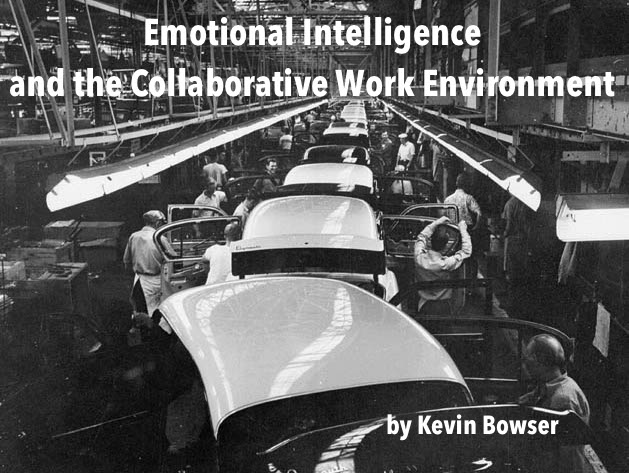Look. I am here to do a job. I am not here to make nice with everyone.
Have you ever heard that? Have you ever said that? If so, you are probably not alone. But you are also probably a little out of touch with today’s work environment.
Gone are the days when you came to work, closed your office door and went about your daily tasks in the quiet and solitude of your office. Gone are the days when you only ventured out of your office to go to the coffee machine and bathroom. Today’s new office environment is about “Collaboration”. And collaboration is not a solo activity. It is team sport.
The old adage about leaving your emotions at the door before stepping into the office is dead, according to a recent study from the University of Bonn. Published in the Journal of Organizational Behavior in November 2014, the study showed individuals who displayed emotional intelligence—the ability to discern other people’s emotions—were more likely to bring home a bigger paycheck than their emotionally-stunted colleagues. In other words, those that are able to collaborate successfully and positively with their colleagues may be more financially successful.
The New Collaborative Workplace Is Different
There was a certain level of cooperation needed in the manufacturing economy of the past. But that economy was focused on productivity, efficiency, and was largely solo driven work an assembly line. These days collaboration and teamwork are emphasized—making emotional intelligence more important in the workplace.
Much of this desire and drive for a collaborative environment has dramatically affected the way that the next generation workspace is outfitted. Where there were private offices, there are now “open offices” (a.k.a. cubicles.) Some designs are almost a throwback to the very thing that caused office furniture manufacturer, Herman Miller, to address.
In 1960 Herman Miller created the Herman Miller Research Corporation, placing the new organization under the supervision of George Nelson, with day-to-day activities directed by Robert Propst. Together, these guys changed the face of the office environment of their day.
Propst and the Research Corporation developed a plan, which George Nelson’s team executed in the form of the Action Office I (AO-1), and introduced it in the Herman Miller lineup in 1964. AO-1 featured desks and workspaces of varying height which allowed the worker a freedom of movement, and to assume the work position best suited for the task. AO-1 was ideally suited to small professional offices in which managers and employees often interacted using the same furnishings.
The New Collaborative Workplace Prioritizes Emotional Awareness
These days collaboration and teamwork are emphasized—making emotional intelligence more important in the workplace. People increasingly rely on each other to share the information needed to get things done. And that means understanding each other’s drivers, motives, and emotions is a lot more important than it used to be.
The office furniture is merely the form that follows the desired function. The aim of senior management is for the work product to be enhanced and thus more valuable due to the interaction between all of the parties necessary to bring an idea to fruition. Some may be needed for collaboration for a short period of time and some may be needed for long-term collaboration. Regardless of the length of time, the furniture allows the freedom to move from a single desk to a small huddle room or on to a bigger team room and conference room to work through design issues or solve complex problems.
What is the leadership lesson here?
A leader who has a high degree of emotional intelligence can recognize when his or her followers are not in the right emotional state to perform well. The leader will adapt and adjust their approach to each team member based upon the leader’s ability to read and interpret the emotional feedback that is being provided — even when that feedback is not verbal.
To understand the role emotional intelligence plays in modern work environments, the researchers used a collection of images and recordings of actors and children, and then showed them to a group of 142 working adults who were asked to label emotional expression. Those who succeeded in identifying the emotion in 87% of the cases were considered to have high emotional intelligence, while those who scored below 60% were considered to have poor emotional intelligence.
Is there really a financial benefit to all of this?
More and more research is indicating that there is indeed a financial benefit to becoming more emotionally intelligent. Think about it for a minute. Would you be more financially successful if your were more in tune with those around you? Would you be more financially successful if you were able to navigate the emotional landscape of your team and help them become more successful?
Watch for a follow-up article on this same topic on Wednesday. You may find it beneficial outside of work.
Photo credit: BiblioArchives / LibraryArchives / Source / CC BY




Please note: I reserve the right to delete comments that are offensive or off-topic.